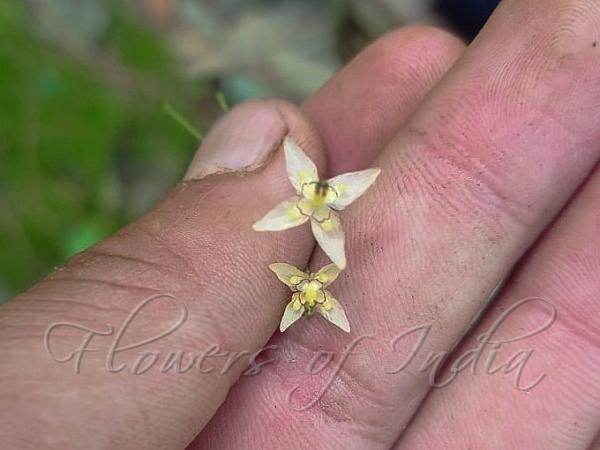|
| Himalayan Barrenwort |
|

|

|
|
|
|
Photo: |
Botanical name: Epimedium elatum Family: Berberidaceae (Barberry family)
Synonyms: Epimedium hydaspidis
Synonyms: Epimedium hydaspidis
Himalayan Barrenwort is an erect perennial herb, about
2-5 ft tall. Flowers are borne in panicles, hairless or glandular,
about 20-30 cm long. Flowers are bisexual, yellowish white,
flower-stalks thread-like, 0.5-2 cm long, bracts minute, sepals 8 in 2
series, inner series. Sepals are petal-like, ovate lanceshaped, tip
pointed, about 1-2 mm long, petals 4, opposite to the sepals, about 2-3
mm long. Stamens are 4, opposite to petals, about 5 mm long,
anther-locules opening by recurved oblong valves, linear, about 1.5 mm
long, filaments almost equal to the ovary, ovary simple, solitary,
linear, style slender,sigma dilated. Stems are solitary, hairless.
Leaves are ternately compound, 2-3 ternate, 15-30 cm across, leaflets
ovate-heart-shaped, 1.5-7 x 1.2-3.5 cm across, margin spinous-toothed,
tip pointed with spinous tip, oblique, papery, somewhat membranous,
leaf-stalk base swollen, about 8-10 cm long, stipulate. Fruits short
capsules, 2 valved, unequal, about 5-10 mm across. Seeds 2-3, with
fleshy aril, smooth, about 2 mm across, dull black. Himalayan
Barrenwort is found in from Pakistan to Kashmir and W. Himalaya, at
altitudes of 2000-2500 m.
Medicinal uses: In Kashmir, West Himalayan
Barrenwort has been used traditionally as an ingredient in many
medicines to treat cold related cough, severe running nose, toothache,
tooth-decay, bones and joints diseases. It was found to be an important
component of various secret winter herbal teas and tonics, used by
tribal communities in forests of Jammu and Kashmir.
In Kashmir, West Himalayan
Barrenwort has been used traditionally as an ingredient in many
medicines to treat cold related cough, severe running nose, toothache,
tooth-decay, bones and joints diseases. It was found to be an important
component of various secret winter herbal teas and tonics, used by
tribal communities in forests of Jammu and Kashmir.
Medicinal uses:
 In Kashmir, West Himalayan
Barrenwort has been used traditionally as an ingredient in many
medicines to treat cold related cough, severe running nose, toothache,
tooth-decay, bones and joints diseases. It was found to be an important
component of various secret winter herbal teas and tonics, used by
tribal communities in forests of Jammu and Kashmir.
In Kashmir, West Himalayan
Barrenwort has been used traditionally as an ingredient in many
medicines to treat cold related cough, severe running nose, toothache,
tooth-decay, bones and joints diseases. It was found to be an important
component of various secret winter herbal teas and tonics, used by
tribal communities in forests of Jammu and Kashmir. | Identification credit: Shakir Ahmad | Photographed in Kupwara, kashmir. |
• Is this flower misidentified? If yes,